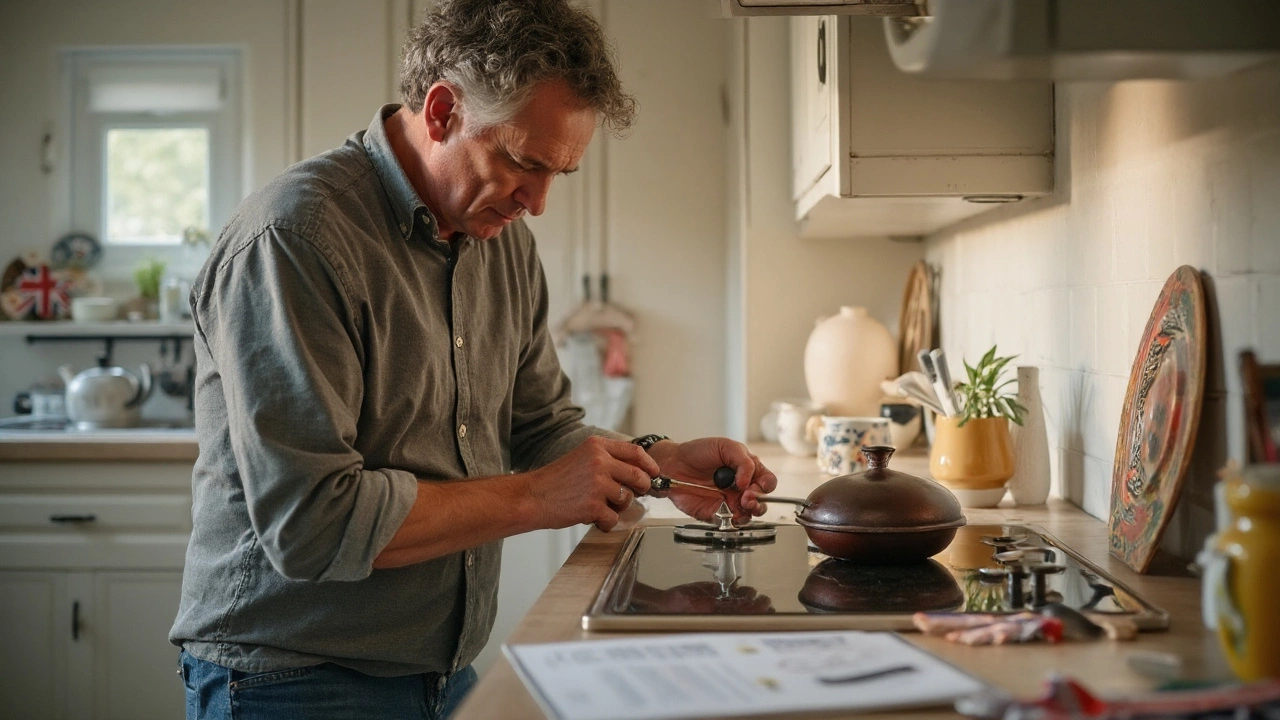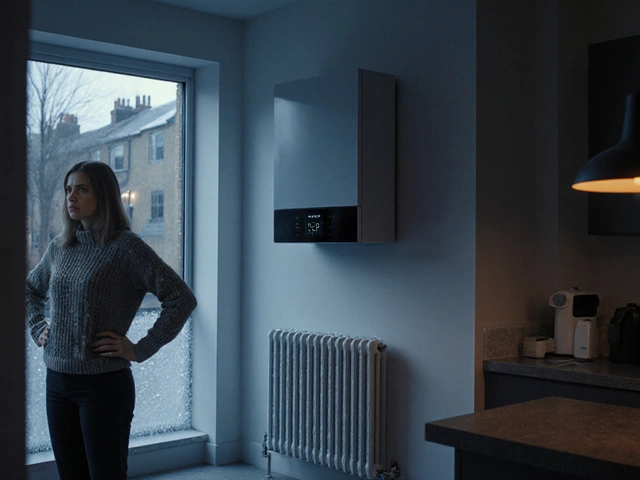If your hob is heating unevenly, making strange noises, or just won’t turn on, you don’t have to panic. Most electric hobs have a few simple parts that wear out, and you can often replace or repair them yourself. In this guide we’ll walk through the most common issues, the tools you’ll need, and the safety steps you can’t skip.
1. Hob won’t heat at all. First, check the power supply. Make sure the plug is seated firmly and the circuit breaker isn’t tripped. If the power is fine, the most likely culprit is a failed heating element. Look under the glass surface – you’ll see a metal coil or a flat strip. Pull the element out, inspect it for a break or burn mark, and replace it with a matching part. Most elements cost under £30 and can be swapped without a specialist.
2. One zone is hotter than the others. Uneven heating often means the temperature sensor (thermistor) is dirty or failing. Turn off the hob, remove the glass top, and locate the sensor near the affected zone. Give it a gentle clean with a soft cloth and a little rubbing alcohol. If the problem persists, swapping the sensor is the next step – it’s a quick pull‑out job.
3. Clicking or buzzing noises. A humming sound can be a loose control knob or a failing relay in the control board. Tighten any loose knobs first. If the noise remains, the control board may need a visual inspection for cracked solder joints. While replacing a board is more involved, you can often find a cheap refurbished unit that fits the same model.
4. Glass top cracked or shattered. Glass tops are fragile but replaceable. Order the exact glass panel from the manufacturer, remove the screws holding it in place, lift it out, and install the new piece. Make sure the underlying heating elements are clean and correctly aligned before you snap the new glass back on.
Before you start, gather a few basic tools: a screwdriver set, a multimeter, pliers, and maybe a utility knife for any sealant work. Safety is key – always unplug the hob or switch off the dedicated circuit at the breaker box. If you’re working with a gas‑electric hybrid hob, double‑check that the gas valve is closed.
Use a multimeter to test continuity on heating elements and sensors. No reading means the part is dead and needs replacing. If you’re unsure about any electrical test, pause and call a qualified electrician. It’s better to waste a few minutes than risk a short circuit.
When the issue is inside the control board, or if you notice scorch marks, water damage, or persistent error codes, it’s time to call a pro. Control boards contain delicate components that require proper soldering skills and often a warranty‑compatible replacement.
Regular maintenance can keep your hob happy for years. Wipe the glass after each use, avoid sliding heavy pots across it, and clean any spills before they harden. A quick check of the power cord and plug each month can catch frayed wires early.
DIY hob repair saves money and gives you confidence in your kitchen gear. Stick to the simple fixes above, use the right tools, and never skip the safety steps. If a problem feels beyond your comfort zone, a quick call to a local appliance repair expert will keep your hob safe and functional.

Can you replace an electric hob element? Absolutely! This hands-on guide dives into safe, practical steps for swapping out faulty burners and keeping your electric hob in top shape.

Can you replace an electric hob element? Absolutely! This hands-on guide dives into safe, practical steps for swapping out faulty burners and keeping your electric hob in top shape.

In the world of home heating, boilers are real workhorses. But have you ever wondered how long your trusty boiler will keep chugging along? Typically, a boiler can last anywhere from 15 to 20 years, depending on various factors like maintenance, usage, and quality of installation. Knowing when to fix or replace your boiler not only ensures a warm home but also helps you avoid unexpected expenses.

Refrigerators are a crucial part of our daily lives, and when they malfunction, it can be a real headache. One of the most common repairs involves fixing the refrigerator's cooling system. Often, issues arise from problems with the condenser coils, which can become dirty or worn out over time. By understanding these common problems, homeowners can better maintain their appliances, potentially saving time and money.

A practical UK guide that tells you exactly who to call when your boiler fails, how to verify a qualified engineer, and what steps to take before and after the repair.

Wondering how often you should replace your extractor fan? This article covers extractor fan lifespan, signs it's time for a change, maintenance tips, and why fresh air matters.